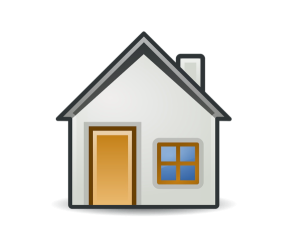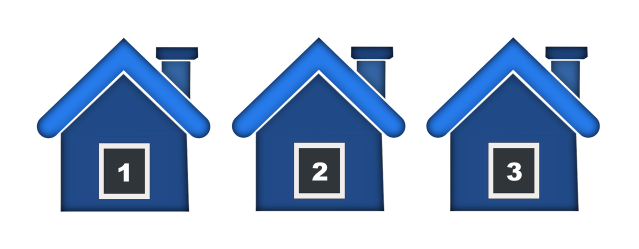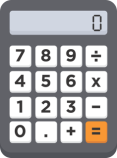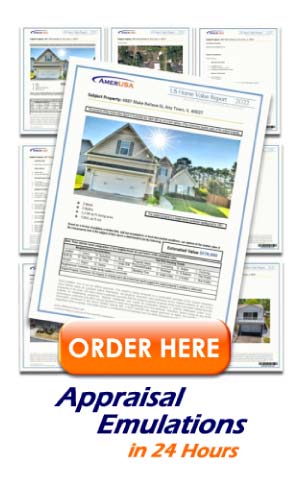How to Do a Real Estate CMA
Normally, we specialize in selling our U.S. Home Value Reports to homeowners and real estate investors to aid them in their preliminary decision-making process regarding buying and selling residential property. But in this article, we’re going to show you how to perform your own version of a home value report called a comparative market analysis (or CMA). You won’t need to buy anything because we will show you some tricks on how to get a reasonable value with publicly available information from any one of your favorite real estate websites. So grab a calculator, and let’s do some math.
Many Things Can Affect a Property’s Value
We’ve got to be honest. When we perform an analysis of a subject property for our clients, it gets very complicated (and it’s very proprietary). So don’t get discouraged when you start to realize how many different variables can affect a property’s value. Consider this article a simplified approach that you can use as a homeowner or homebuyer to determine a reasonable market value. It’s no secret that we sell reports, so our service is always available if you wish to take advantage of it.
Step 1: Research the Subject Property

The first step is to research your subject property first. You’re going to need to know the following information:
- Living Area Square Footage
- Lot Size
And that’s it.
But What About the Number of Rooms?
Values aren’t determined by the number of rooms unless the property has really peculiar characteristics. Yes, a 3 bed 2 bath home can be the same value as a 2 bed 2 bath home with the same square footage.
Ok, Then What About Amenities and Features?
One step at a time – after you calculate the initial value, you can then go back to add or subtract based on any notable characteristics of other properties like each property’s age, pool & spa, recent renovations, and so on.
So let’s get you to perform the basic calculations first and then you can refine them accordingly.
Step 2: Research Comparable Sales

After you get the Living Area Square Footage and lot size, you now need to do the same for 3 to 5 comparable properties, but also include the sales price. Comparable properties are approximately the same size and age (whenever possible) that have sold in the past 3 months and are located within a mile radius of the subject property. For less active markets, you can extend the radius and time frame of your search.
Again, like we said, it can get complex, but you’ll at least have a better idea about the value of your subject property than what many real estate websites estimate.
Step 3: Perform Comparative Market Analysis

Now that you’ve got all of your numbers. Here’s how you perform a basic comparative market analysis. For our example, we will use one subject property with 3 comparable sales that have recently sold. This way, we will avoid complicating matters with several adjustments for appreciation and the endless list of other variables like pools, recent updates, and so on. Otherwise, this relatively short exercise could turn into a semester-long class.
Subject Property
So our subject property example has 2,340 sq ft and sits on a quarter of an acre (.25)
| Subject Property | |
| Living Area | 2,340 sq ft |
| Lot Size | .25 acre |
Comparable Sales
Our comparable sales (also known as comps) have the following characteristics:
| Comp 1 | Comp 2 | Comp 3 | |
| Living Area | 2,199 sq ft | 1,978 sq ft | 2,149 sq ft |
| Lot Size | .24 acre | .27 acre | .26 acre |
| Sales Prices | $540,000 | $520,000 | $502,000 |
Determine the Cost Per Square Foot

Starting with Comp 1, let’s determine the cost per square foot. You can easily do this by dividing the sales price of $540,000 by it’s living area of 2,199 sq ft. This will give us an approximate $246 p sq ft. Now use the same equation for Comps 2 and 3.
| Comp 1: $540,000 ÷ 2,199 sq ft = $246 per sq ft |
| Comp 2: $520,000 ÷ 1,978 sq ft = $263 per sq ft |
| Comp 3: $502,000 ÷ 2,149 sq ft = $234 per sq ft |
So which “cost per square foot” should you use?
Well, that depends on how similar any of those properties are to your subject property. For example: If you find Comp 2 exhibits the same age, updates and amenities like it’s basically the twin sister of your subject property, then you can just use $263 per sq ft to estimate your subject property’s value.
So you would take that cost per square foot $263 and multiply it by the living area of your subject property which in our example was 2,340, and that gives us an estimated value of $615,420.
| Comp 2 $263 per sq ft x 2,340 sq ft = $615,420 |
But if you’re unsure and haven’t seen interior photos or any agent notes, then it’s best to average the 3 comps together by adding all of the prices per square foot and dividing by 3. This would give you an average cost per square foot of $248.
| Comp 1 $246 per sq ft + Comp 2 $263 per sq ft + Comp 3 $234 per sq ft ÷ 3 = Average $248 per sq ft |
Calculating the Estimated Value
Once you have determined the appropriate “cost per square foot,” (we have chosen the averaging option for this example) you would take that cost per square foot ($248) and multiply it by the living area of the subject property (2,340 sq ft), and that gives us an estimated value of $580,000.
| Subject Property $248 per sq ft x 2,340 sq ft = $580,000 |
Once again, this is a very simplified version of a comparative market analysis. You can always add many other variables into the equation and make adjustments between comps based on age, lot size, and amenities.


